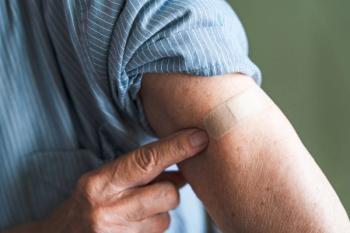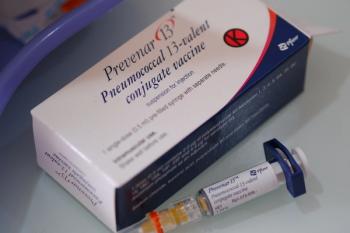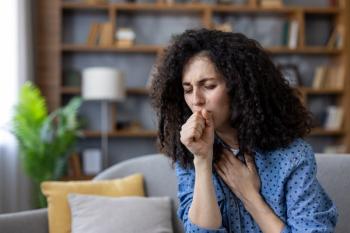
Closing the Historic Routine-Vaccination Gap
Pharmacists can play a key role in helping to improve backsliding vaccination rates.
On July 15, 2022, the World Health Organization (WHO) reported the largest decrease in routine vaccinations in 30 years. In 2021, 25 million infants worldwide missed routine vaccinations and 2.6 million children in the United States were unvaccinated or not up to date on their vaccines.1
The steep decline has health officials on alert. In the news release, the WHO said the DTP3 (diphtheria tetanus toxoid and pertussis) vaccination rate, a touchstone for vaccination coverage rates, fell 5% between 2019 and 2021 to 81%, resulting in 25 million children missing 1 or more doses. In the Americas—where reported rates of routine vaccinations for rubella, measles, polio, and diphtheria have been steadily declining over the past 10 years—the pandemic has only made things worse. Human papillomavirus (HPV) vaccination has also steeply declined: More than 25% of the coverage of HPV vaccines achieved in 2019 has been lost.1
The causes for the historic decrease in vaccination rates, according to the WHO, included COVID-19 containment measures that blocked access to health care services, supply chain issues, resource diversion, vaccine misinformation, service disruptions, and more children residing in conflict or fragile zones where vaccines could not reach them.1
Brigid Groves, PharmD, MS, senior director of practice and professional affairs at the American Pharmacists Association (APhA) in Washington, DC, spoke with Drug Topics® to explain how pharmacists can help close the vaccination gap exacerbated by the COVID-19 pandemic. Closing this gap, she said, is essential because in addition to lower rates of routine vaccinations causing a resurgence in diseases, “there is a particular danger to immunocompromised patients who rely on herd immunity for coverage.”
Barriers to Implementing Vaccination
Pharmacists are well positioned to help improve vaccination rates, but barriers do exist, Groves noted. “Depending on the state, there are different protocols and legislation in place regarding the administration of vaccines,” she said. “There are inconsistencies among which vaccines can be given to which age groups, where, and by whom.” Pharmacists should confirm local rules and regulations with their state pharmacy practice acts to ensure training and compliance, she said.
Another barrier is vaccine hesitancy among patients. According to Groves, a major contributor to hesitancy has been misinformation that was already circulating before the pandemic and then became worse over the past 2 years.
How Pharmacists Can Increase Vaccination Rates
Groves shared several ways that pharmacists can assist in closing gaps in vaccination. She said some states allow pharmacists to access immunization records, and having that information readily available is one way to assess immunization gaps for individual patients.
Another way pharmacists can increase rates of vaccination is to connect and collaborate with local communities, Groves said. “Pharmacists can be especially helpful in communities that don’t have other health care providers or locations nearby to get the vaccinations they need,” she explained. This includes public health entities and other providers, especially for pediatric and adolescent patients. “Pharmacists are extenders of care to make services more accessible to families when they connect with health care providers,” she said.
Groves also suggested that pharmacists think outside the box and coordinate to offer vaccinations in a local facility space where other providers such as pediatricians can be invited to attend. “Pharmacists can then create a fun and engaging atmosphere, using stickers or other novelty items to encourage children to feel comfortable,” she said.
Pharmacists can also discuss vaccines with patients when they pick up prescriptions. This point-of-care technique prevents patients from having to make an appointment and additional trip, Groves said. That contact in the pharmacy also provides an opportunity to fight misinformation. “Having conversations with families, caregivers, and patients can reduce misinformation and increase rates of vaccination,” she noted. “Scientific studies can be overwhelming for patients. Pharmacists can distill data into patient-friendly, understandable language to educate patients on the importance of being up-to-date on vaccinations.
“Pharmacists know the appropriateness of the vaccine for the patient, the timing of doses, and any contraindications that would preclude the patient from being eligible for that particular vaccine,” Groves continued, adding that pharmacists also are excellent at counseling patients and making sure they have opportunities to ask questions, which is especially important for concerned parents of pediatric patients.
Reference
1. COVID-19 pandemic fuels largest continued backslide in vaccinations in three decades. News release. World Health Organization. July 15, 2022. Accessed August 1, 2022.
Newsletter
Pharmacy practice is always changing. Stay ahead of the curve with the Drug Topics newsletter and get the latest drug information, industry trends, and patient care tips.





























































































































